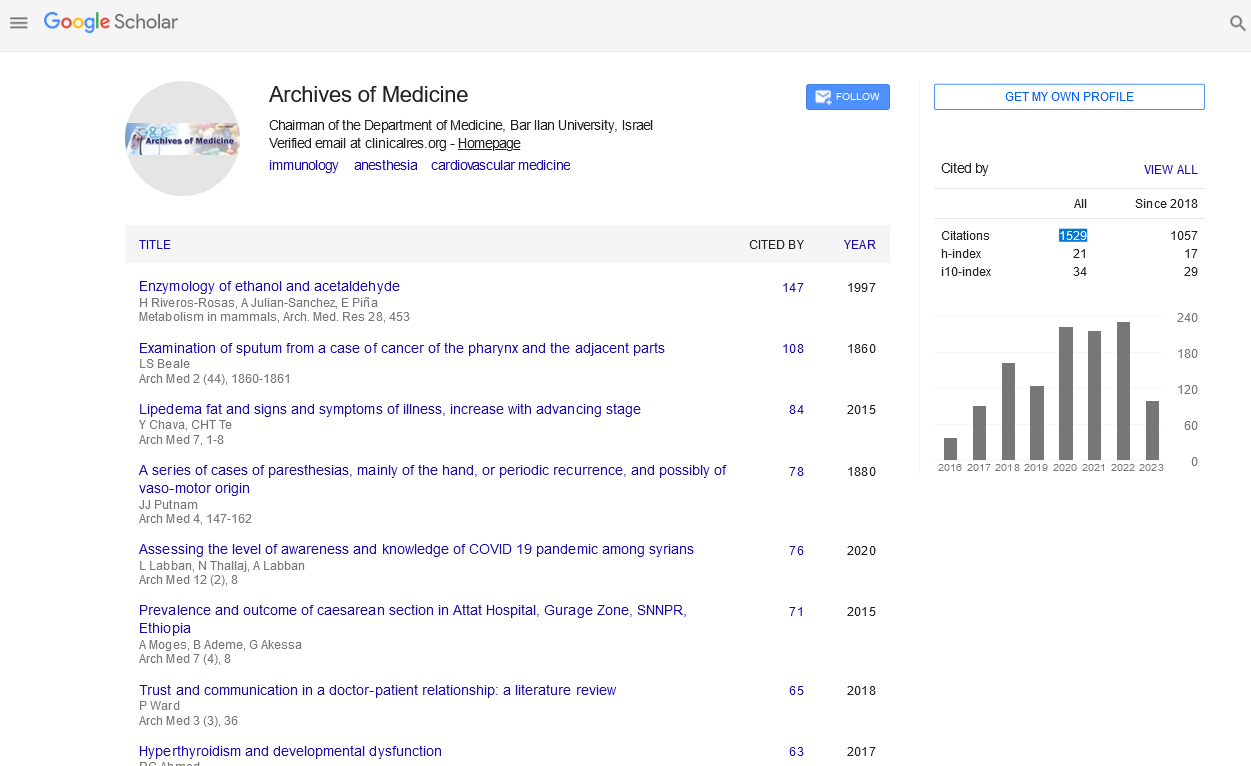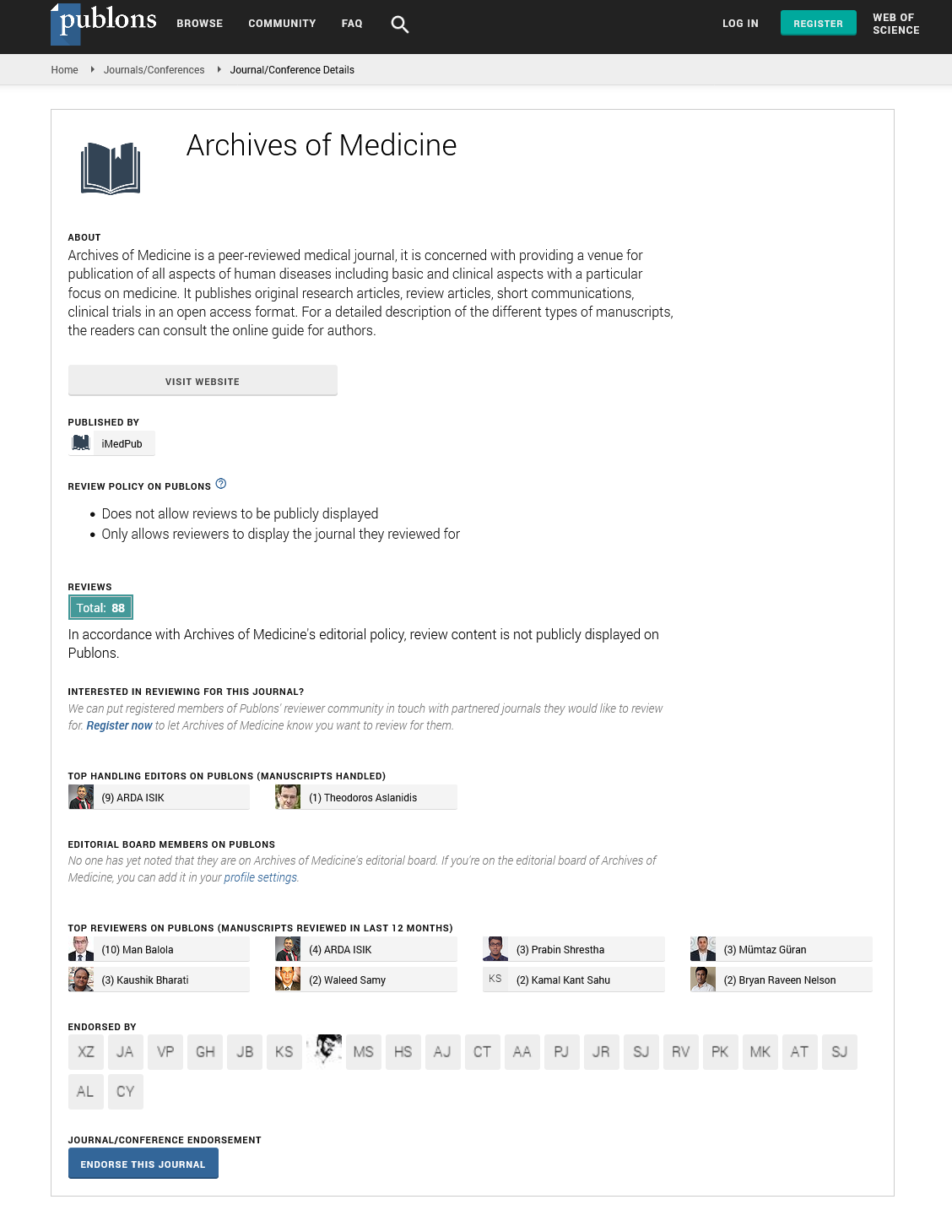Short Communication - (2024) Volume 16, Issue 5
Revolutionizing diagnosis: The future of medical imaging technologies
Ethan Mitchell*
Department of Medical Imaging, University of Sydney Camperdown, NSW 2050, Australia
*Correspondence:
Ethan Mitchell, Department of Medical Imaging, University of Sydney Camperdown, NSW 2050,
Australia,
Email:
Received: 23-Aug-2024, Manuscript No. ipaom-24-15403;
Editor assigned: 26-Aug-2024, Pre QC No. P-15403;
Reviewed: 06-Sep-2024, QC No. Q-15403;
Revised: 11-Sep-2024, Manuscript No. R-15403;
Published:
18-Sep-2024
Introduction
The field of medical imaging has undergone remarkable transformations over the past few decades, fundamentally altering how healthcare professionals diagnose and treat a wide array of medical conditions. From the inception of X-rays to the advent of MRI and CT scans, advancements in imaging technologies have consistently improved diagnostic accuracy and patient outcomes. As we move into an era of rapid technological advancement, the future of medical imaging promises even more revolutionary changes. Innovations such as Artificial Intelligence (AI), 3D imaging, and portable diagnostic tools are poised to enhance the precision, speed, and accessibility of medical imaging. Furthermore, as the global healthcare landscape evolves—especially in response to challenges posed by aging populations and the rise of chronic diseases—there is an urgent need for more efficient diagnostic methods. This increased demand is driving innovation and investment in imaging technologies, making it essential for healthcare professionals and patients alike to stay informed about the latest advancements. This article explores the emerging trends and technologies in medical imaging that are set to reshape the landscape of diagnosis and patient care [1].
Furthermore, as the global healthcare landscape evolves—especially in response to challenges posed by aging populations and the rise of chronic diseases—there is an urgent need for more efficient diagnostic methods. The increasing demand for timely and precise diagnostics is driving innovation and investment in imaging technologies, making it essential for healthcare professionals and patients alike to stay informed about the latest advancements. In addition, the growing emphasis on patient-centered care is pushing for imaging solutions that not only deliver high-quality results but also enhance the patient experience, whether through faster turnaround times or more comfortable procedures. This article explores the emerging trends and technologies in medical imaging that are set to reshape the landscape of diagnosis and patient care. By examining the current trajectory of innovations, we can gain insight into how these advancements will impact the future of healthcare delivery, ultimately improving outcomes for patients worldwide [2].
Description
The future of medical imaging is characterized by the integration of cutting-edge technologies that enhance diagnostic capabilities and improve patient experiences. One of the most significant trends is the incorporation of artificial intelligence and machine learning algorithms into imaging systems. These technologies can analyze vast amounts of imaging data rapidly and accurately, identifying patterns that may be overlooked by human eyes [3]. AI-driven tools are already being utilized in radiology to assist in the detection of conditions such as tumors, fractures, and even subtle changes in disease progression, leading to earlier interventions and better patient outcomes. Another exciting development is the advancement of 3D imaging techniques, which provide a more comprehensive view of anatomical structures. Unlike traditional 2D images, 3D imaging allows healthcare providers to visualize complex organs and tissues in greater detail, facilitating more accurate diagnoses and treatment planning [4]. Additionally, techniques like 3D printing are emerging as valuable tools in surgical planning, enabling physicians to create physical models of patient anatomy to enhance preoperative preparation.
Portable imaging devices are also changing the game by making diagnostic tools more accessible. Technologies such as handheld ultrasound and compact MRI machines allow for imaging in diverse settings, including remote locations and emergency situations. This increased accessibility not only improves patient care but also supports early diagnosis, particularly in underserved areas where traditional imaging facilities may be limited. Moreover, the integration of imaging with telemedicine and electronic health records is paving the way for more streamlined patient care. Healthcare providers can share imaging results instantly, collaborate on diagnoses, and monitor patient progress remotely, ensuring that patients receive timely and coordinated care. As we look ahead, the development of hybrid imaging technologies, which combine different imaging modalities like PET and CT or MRI, is also gaining traction. These hybrid approaches provide a more holistic view of patient health, enabling more precise diagnostics and personalized treatment plans that can lead to better clinical outcomes [5].
Conclusion
The future of medical imaging technologies is bright, with innovations poised to revolutionize the way we diagnose and treat medical conditions. The integration of artificial intelligence, 3D imaging, portable devices, and telemedicine will enhance diagnostic accuracy, accessibility, and efficiency in healthcare delivery. As these technologies continue to evolve, they will not only improve patient outcomes but also reshape the healthcare landscape by fostering more personalized and proactive care approaches. Embracing these advancements will be crucial for healthcare professionals, as they navigate the challenges and opportunities presented by this rapidly changing field. Ultimately, the continued evolution of medical imaging holds the promise of better health outcomes for patients around the globe, marking a significant step forward in the quest for precision medicine. As we embrace these innovations, it is also essential to address potential ethical and regulatory challenges that may arise, ensuring that new technologies are implemented responsibly and equitably. By prioritizing both innovation and ethical considerations, we can maximize the benefits of medical imaging advancements, paving the way for a healthier future for all.
Acknowledgment
None.
Conflict of Interest
None.
References
- Friedrich C, Bourguignon S, Idier J, et al. Three-dimensional microwave imaging: Fast and accurate computations with block resolution algorithms. Sensors. 2020 4;20(21):6282.
Google Scholar, Crossref, Indexed at
- Xie Y, Guo B, Xu L, et al. Multistatic adaptive microwave imaging for early breast cancer detection. IEEE Trans Biomed Eng. 2006 17;53(8):1647-57.
Google Scholar, Crossref, Indexed at
- Lim HB, Nhung NT, Li EP, et al. Confocal microwave imaging for breast cancer detection: Delay-multiply-and-sum image reconstruction algorithm. IEEE Trans Biomed Eng. 2008 16;55(6):1697-704.
Google Scholar, Crossref, Indexed at
- Shen CC, Hsieh PY. Ultrasound Baseband Delay-Multiply-And-Sum (BB-DMAS) nonlinear beamforming. Ultrasonics. 2019 1;96:165-74.
Google Scholar, Crossref, Indexed at
- Reimer T, Solis-Nepote M, Pistorius S. The application of an iterative structure to the delay-and-sum and the delay-multiply-and-sum beamformers in breast microwave imaging. Diagnostics. 2020 17;10(6):411.
Google Scholar, Crossref, Indexed at






